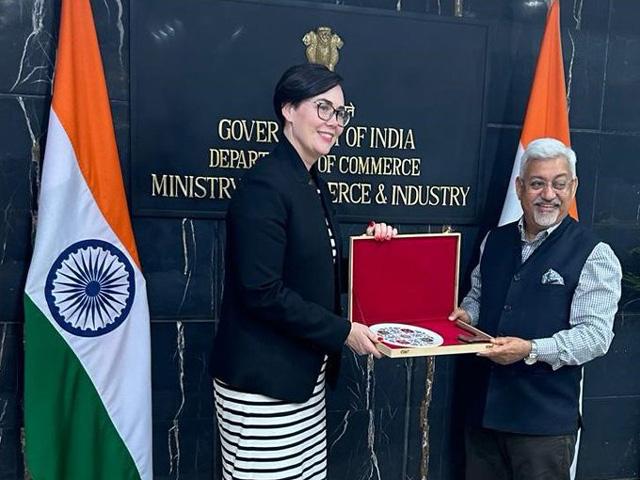Ag Policy Blog
Trade Mission to India Hopefully Bears Fruit for US Agricultural Exports
The U.S. Department of Agriculture (USDA) and some state departments of agriculture on Wednesday championed the potential fruits that could come from a current trade mission to India.
A couple of images used by USDA's Foreign Agricultural Service indicated the number of people on the trade mission could have filled an entire commercial jet. In a call from New Delhi, India, USDA Undersecretary for Trade and Foreign Agriculture Alexis Taylor said there were 130 Americans with 23 different businesses and roughly the same number of commodity groups participating in the trip, as well as leaders from 11 state agricultural departments.
"We have the largest trade delegation of any TM (trade mission) I've been on," Taylor said.
There's a lot of room for growth in exports to India. Over the past five years, U.S. agricultural exports to India have averaged just under $2 billion a year to the country with the world's largest population. The top agricultural exports are horticultural products, along with ethanol "for non-fuel or industrial use" and cotton.
"Around 1% of our food and ag exports go to India that I think we way underperform," Taylor said. "I think there is a huge opportunity to grow that, and I think it's really important for our agricultural community and our farmers and ranchers to be investing in this market."
One reason for the trade mission is to help gain sales for 10 commodities India reduced tariffs on last year. India lowered tariffs in September on frozen turkey, frozen duck, fresh blueberries, and cranberries, frozen blueberries, cranberries, dried blueberries and cranberries, and processed blueberries and cranberries. USDA had estimated that the lower tariffs could boost exports to India by about $345 million this year.
P[L1] D[0x0] M[300x250] OOP[F] ADUNIT[] T[]
"We really wanted to capitalize on that additional market access for our producers," Taylor said.
India is an important market when it comes to diversifying U.S. agricultural exports and a way to help "derisk some of the global trading environment," she said.
Taylor also noted India has 634 million people under age 24, a growing middle class, and an expansion in new areas of e-commerce.
When USDA opened its Regional Agricultural Promotion Program (RAPP) last year, the department received requests from export groups for $80 million to promote products in India.
Among states that joined the trade mission were California, Georgia, Idaho, Indiana, Maryland, Minnesota, Mississippi, New Mexico and North Dakota.
Karen Ross, California's agriculture secretary, said almonds have been popular in India for two decades, but she was looking for more exports of walnuts and pistachios. She added, "Dried fruits are extremely popular here. I think it really plays into a message we've heard over and over again about mindful eating, healthy eating and nutrition."
In ethanol, the U.S. Grains Council held a biofuels summit with Taylor and U.S. Trade Representative agricultural negotiator Doug McKalip. The council signed a memorandum of understanding to help India with technical assistance to expand biofuel usage to help the country achieve some of its climate goals.
Taylor said U.S. officials were interested in expanding exports of ethanol to go to fuel directly, or increase exports of grain feedstocks for India to produce its own fuel, and have protein byproducts.
"They are severely deficit in feed and animal protein," Taylor said.
Indiana is focusing on exporting ducks and turkey with a lower tariff rate for exports in India. Mississippi already sends cotton and wood to India but would ideally like to export more poultry products as well.
Doug Goehring, North Dakota's agriculture commissioner, said he had come away from three previous trade missions "quite discouraged" but he saw more reasons to be positive in this trip to India.
"There's also a different mindset that they are shifting from just food security to nutrition security," Goehring said, adding that helps the U.S. "When you are looking at safe and high-quality foods, generally you do look towards the U.S., and I believe we can deliver on that."
Chris Clayton can be reached at Chris.Clayton@dtn.com
Follow him on social platform X @ChrisClaytonDTN
(c) Copyright 2024 DTN, LLC. All rights reserved.






Comments
To comment, please Log In or Join our Community .